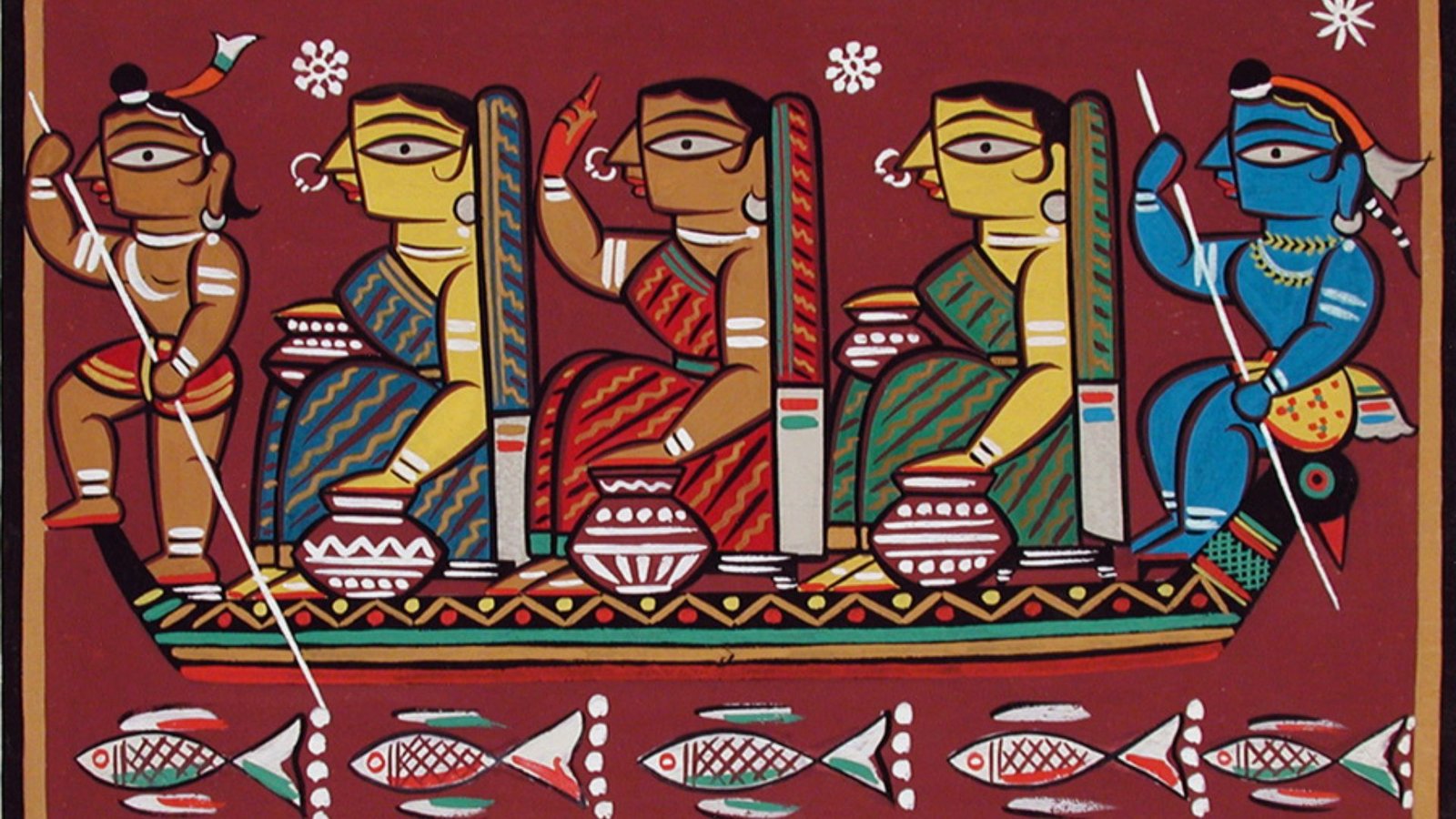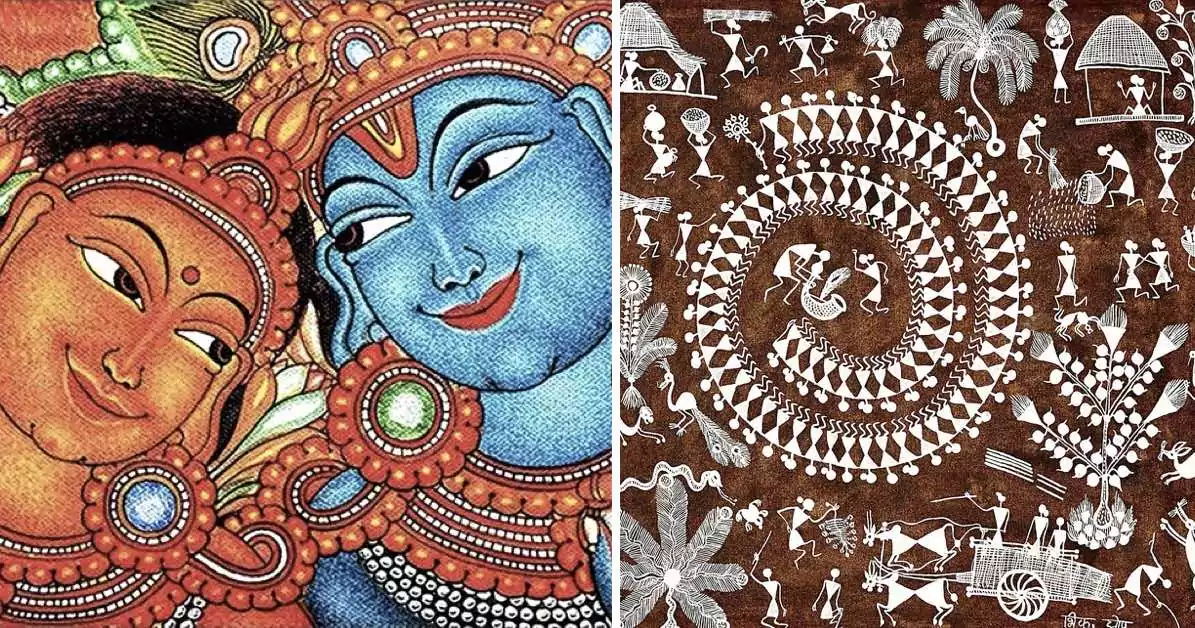Understanding Indian art movements and their influences provides a window into the rich tapestry of India’s artistic heritage. These movements have shaped the nation’s art scene and left an indelible mark on global art. This article explores key art movements in India and their profound impacts.
1. Traditional Indian Art
Traditional Indian art encompasses a wide range of styles and techniques that have evolved over centuries. This includes ancient forms like frescoes and miniature paintings, which reflect India’s deep cultural and religious heritage. Traditional Indian art movements laid the foundation for many contemporary practices and continue to influence artists today.

2. Bengal School of Art
The Bengal School of Art emerged in the early 20th century as a response to British colonial rule. Led by artists like Abanindranath Tagore and Nandalal Bose, this movement aimed to revive traditional Indian art forms while incorporating modern techniques. The Bengal School played a crucial role in establishing a distinct Indian identity in art.
3. Progressive Artists’ Group
Founded in 1947, the Progressive Artists’ Group (PAG) was a significant movement in post-independence India. Artists like M.F. Husain, F.N. Souza, and S.H. Raza sought to break away from traditional styles and embrace modernism. The group’s innovative approach brought Indian art into the global arena, blending Western techniques with Indian themes.
4. Bombay Progressive Artists’ Group
The Bombay Progressive Artists’ Group, established in the 1950s, aimed to modernize Indian art and bring it to international standards. Artists such as M.F. Husain and S.H. Raza were instrumental in this movement. The group’s emphasis on abstraction and expressionism marked a significant departure from traditional Indian art forms.
5. Modern Indian Art
Modern Indian art, which emerged in the mid-20th century, reflects a blend of traditional Indian aesthetics and Western influences. This movement includes a diverse range of styles, from abstract to figurative, and explores new media and techniques. Modern Indian artists have gained international recognition for their innovative contributions.
6. Contemporary Indian Art
Contemporary Indian art represents the current trends and practices in the Indian art scene. This movement is characterized by its diverse approaches, including digital art, installations, and conceptual works. Contemporary artists engage with global issues while maintaining a connection to their cultural roots.
7. Tanjore Painting Revival
The revival of Tanjore painting in the late 20th century brought this traditional South Indian art form back into the spotlight. Known for its rich textures and use of gold foil, Tanjore paintings reflect religious themes and local traditions. The revival has helped preserve this ancient craft and introduced it to a wider audience.
8. Indian Miniature Painting
Indian miniature painting, which dates back to the Mughal era, continues to influence contemporary art. These intricate paintings, often created on a small scale, depict historical events, court scenes, and religious themes. Modern artists draw inspiration from this tradition, incorporating its techniques into their works.
9. Tribal Art
Tribal art from various regions of India showcases the unique cultural expressions of indigenous communities. This art often features vibrant colors and abstract forms, reflecting the community’s relationship with nature and spirituality. Tribal art movements have gained recognition for their authenticity and cultural significance.
10. Phad Painting
Phad painting, a traditional art form from Rajasthan, involves creating narrative scrolls that depict local legends and religious stories. This art form, known for its vibrant colors and detailed imagery, has experienced a resurgence in recent years. Modern artists have embraced Phad painting techniques while exploring new themes.
11. Warli Art
Warli art, originating from Maharashtra, is characterized by its simple geometric patterns and depiction of daily life. This tribal art form has gained international acclaim for its unique style and storytelling. Contemporary artists continue to explore Warli techniques, blending them with modern themes.
12. Pattachitra Art
Pattachitra art, from Odisha and West Bengal, is known for its intricate patterns and mythological themes. The revival of Pattachitra painting has introduced this traditional art form to a global audience. Artists incorporate traditional techniques while experimenting with new subjects and styles.
13. Madhubani Art
Madhubani art, from Bihar, is famous for its vibrant colors and intricate designs. This traditional art form often depicts folk themes, including mythology and nature. The global recognition of Madhubani art has led to its incorporation into contemporary art practices, blending tradition with modernity.
14. Kalighat Painting
Kalighat painting, originating from Kolkata, is known for its distinctive style and satirical themes. This art form, which initially depicted religious subjects, evolved to include social commentary. The influence of Kalighat painting can be seen in contemporary works that address social issues.
15. Contemporary Indian Sculpture
Contemporary Indian sculpture reflects a range of styles and materials, from traditional bronze to modern mixed media. This movement has gained international recognition for its innovative approaches and exploration of themes related to identity, politics, and culture. Contemporary sculptors continue to push boundaries and redefine the art form.
Conclusion
Indian art movements and their influences provide a rich tapestry of cultural and artistic evolution. From traditional forms to contemporary practices, these movements have shaped India’s art scene and made a significant impact globally. By understanding these movements, we gain insight into the diverse and dynamic world of Indian art.

